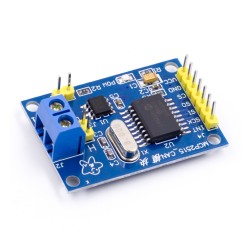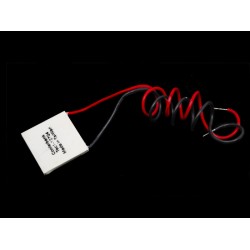
Model: thermistor 100k
Specification
B Constant 4400K
Resistance 100K OHM
Temperature -30°C to +125°C
Thermistor Type NTC Thermistor
Tolerance ±10%..
KES 30.00
Model: thermistor 10k
SpecificationB Constant 4400KResistance 10K OHMTemperature -30°C to +125°CThermistor Type NTC ThermistorTolerance ±10%..
KES 30.00
Model: Digital Voltmeter Ammeter Dual Display
Size: 48mm x 29mm x 21mm.Display color: Red & Blue LED (dual display).Display: 0.28" LED digital.Operating voltage: DC 4.5 ~ 30V.Measure voltage: DC 0 ~ 100V.Minimum resolution (V): 0.1V.Refresh rate: ≥500ms / times.Measure accuracy: 1% (± 1 digit).Minimum resolution (A): 0.01A.Operating Current..
KES 500.00
Model: 10D101K
Product AttributeAttribute ValueSelect AttributeManufacturer:BournsProduct Category:VaristorsRoHS: DetailsSeries:MOV-10DxxxKProduct:MOVMounting Style:PCB MountTermination Style:RadialVoltage Rating AC:60 VACVoltage Rating DC:110 VDCVaristor Voltage:100 VClamping Voltage:165 VDiameter:10 mmPeak ..
KES 20.00
Model: rotary encoder switch
Description:
These are continuous rotary encoder switch
With built in push button switch (push to operate)
Can be used for data entry as with modern in car CD players, for volume & on/off control or data selection via LED or LCD display
Perfect for use with PIC or ATMEL microcontrollers
..
KES 100.00
Model: Varistor 10D220K
TYPEDESCRIPTIONSELECTCategoryCircuit ProtectionTransient Voltage Suppressors (TVS)Varistors, MOVsMfrBourns Inc.Series-PackageBulkProduct StatusActiveMaximum AC Volts14 VMaximum DC Volts18 VVaristor Voltage (Min)20 VVaristor Voltage (Typ)22 VVaristor Voltage (Max)24 VCurrent - Surge500 AEnergy2.5JNum..
KES 20.00
Showing 1 to 10 of 10 (1 Pages)



































